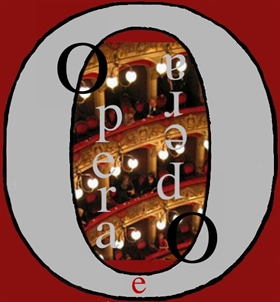TOSCA in Vienna – Review by Natalia Dantas – Piotr Beczala debuts in the role, Sondra Radvanovsky, Thomas Hampson: triumph for Puccini's masterpiece –
A quarter of an hour of final applause at the end of a memorable third act of Tosca cannot lead the writer to write down the usual review: the enthusiasm for this staging on 18 February 2019 at the Wiener Staatsoper represented a moment of return to the past and, at the same time, of projection towards the future. For those who, like the writer, frequent this magnificent theater and have seen the same productions several times, it comes naturally to think of how many Cavaradossis put on and took off that yellow vest of the first and second acts; how many Scarpias died on that red carpet; how many knives Tosca grabbed from that table set for the torturer's dinner. But each performance is an event in itself and therefore the evening of Piotr Beczala's personal triumph cannot pass as one of the many performances of Tosca in the now historic production by Nicola Benois, directed by Margarethe Wallmann.

If the final applause lasted more than a quarter of an hour, the applause that followed the performance of "E lucevan le stelle" lasted at least four minutes, with insistent and enthusiastic requests for an encore. Beczala performed the much acclaimed encore, pleasing the audience and proving himself, in this too, to be a fully mature Cavaradossi: the great lyric tenor is moving on to more robust roles at the right time with the right enthusiasm, with the right joy and with the right reception from the public.
His Cavaradossi proved to be almost perfect, studied down to the smallest detail both musically and interpretatively, to satisfy even the palates of the most demanding music lovers. Full, rounded, full-bodied and soft voice followed an elegant phrasing and managed the wind instruments in an admirable manner, projecting the sound without reservations.

At her side, the beautiful and delicate Sondra Radvanovsky played Tosca, less aggressive than the usual character and more of a salon girl, more lover than tiger, with a full, beautiful, full-bodied vocality throughout the entire opera and in particular in the third act; and a performance of “Vissi d’arte” which aroused the enthusiasm of the audience.

Thomas Hampson's Scarpia then loomed large on the scene. The great baritone alone fills the stage, he can manage to destroy anyone next to him; but, in Scarpia's textbook malice he also expressed the immense professionalism that characterizes him, leaving room without distinction for all his colleagues to shine with their own light. Therefore, in the opinion of the writer, Thomas Hampson's Scarpia remains, together with Piotr Beczala's debut in Cavaradossi, in the annals of the wonderful Viennese theater and in the memory of all those who attended it.

And we are talking about one of the largest and most prestigious theaters in the world, equipped with an orchestra which in this Tosca, masterfully directed by Maestro Marco Armiliato, after just two days from the performance of a perfect Lucia di Lammermoor under the guidance, well different in repertoire, by M° Evelino Pidò, she was able to identify with the Puccinian sounds and the robust, colourful, at times agitated dynamics that the Director Armiliato rightly, in a very Italian way, imposed on her.
As for the Benois production mentioned above, the scene, as mentioned, repeats itself but is never the same, because generations of performers change. Worth highlighting, however, are the polished furnishings, the renewed costumes, everything is sparkling. So it's clear that Margarethe Wallmann's direction still has some flaws after so many years; ignore the fact that the sacristan continues to hand the painter the colors in tubes in the year 1800; that the inkwell is missing for Cavaradossi to write his last letter and that the goose pen writes as if it were a fountain pen. Only Roberto Alagna, years ago, had the presence of mind to invent the inkwell: Piotr Beczala preferred to write straight away, already emanating from that moment all the concentration, emotion and commitment that he would immediately afterwards pour into the famous piece that definitively decreed its triumph. But they are little things that only the meticulous connoisseur bothers to notice and write down.
A rich, opulent evening, with a stellar cast, after another equally rich and opulent Donizetti evening with an equally stellar cast. Whoever went to Vienna in these days of February 2019 in search of emotions in music at the Wiener Staatsoper, after having having witnessed two performances of this level can only wish to return as soon as possible.
Natalia Dantas
PHOTOS Vienna State Opera | Michael Pöhn

